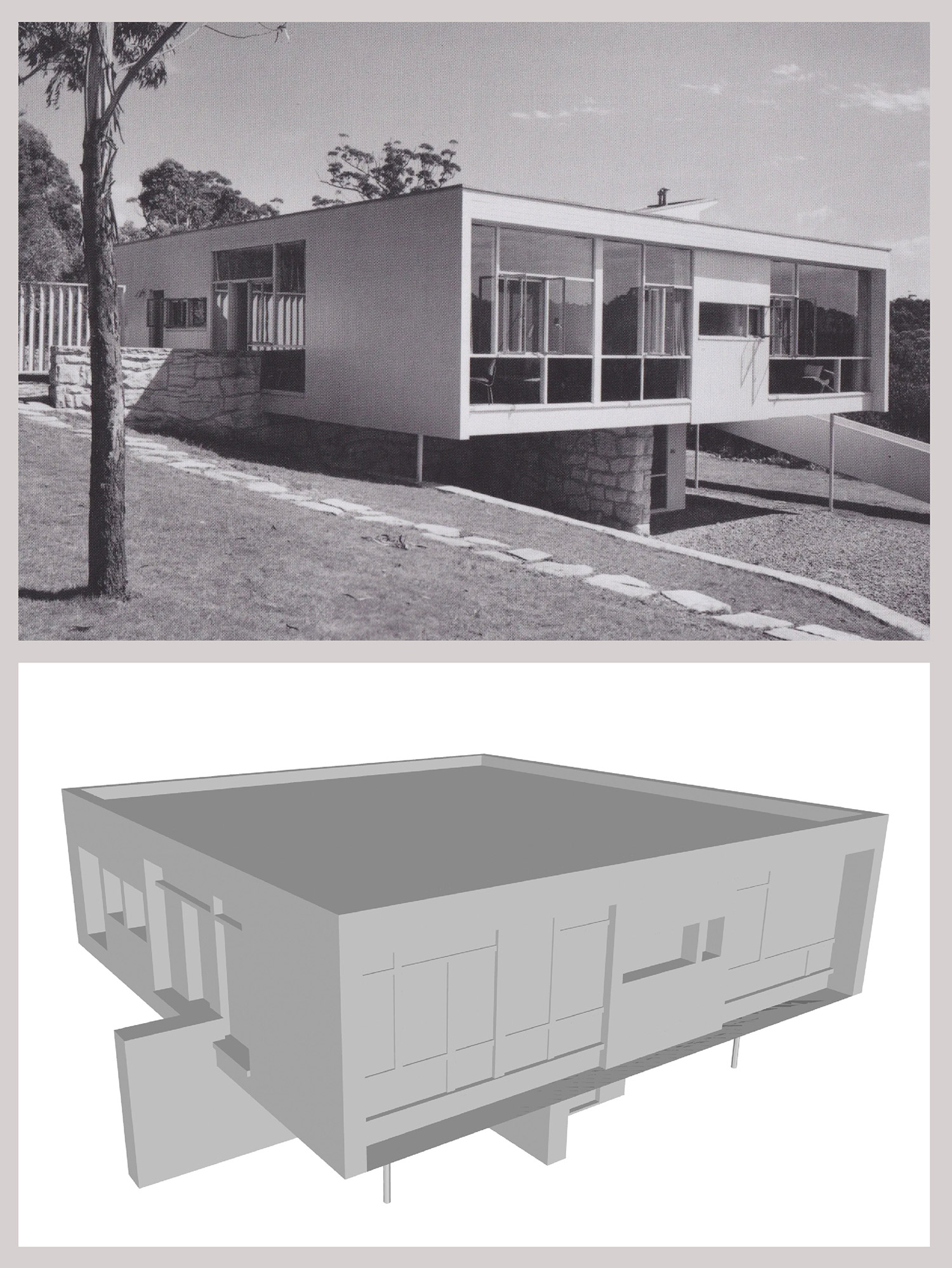While we see design software marginally improve year on year, there has been growing unrest at the pace/scale of improvements. Questions have been raised about how well BIM workflows map to how the industry actually works. Martyn Day looks at the potential impact of artificial intelligence on architecture
As a society, living in a technological age, we have become incredibly used to rapid change. Sometimes it feelslike the one constant we can rely on is that everything will change. For millennia humankind lived in caves, scrawling drawings on the walls. The Stone Age was 2.5 million years long, then came the Bronze Age and, with it, urbanisation, which lasted 1,500 years. The first Industrial Revolution lasted just 80 years (1760 – 1840). Before we reached our current, digital age, the Wright Brothers perfected powered flight and just 66 years later, our species had escaped Earth’s gravity, traversed the vacuum of space and landed on the moon. We are making advances in ever shorter timeframes and have industrialised innovation through the development of ever-smarter tools.
The next revolution is already here but, as the saying goes, it will not be evenly distributed. At the moment, many aspects of our working lives are still going through digital transformation. Everything is becoming data and the more that becomes centralised, the more insights it enables, offering a greater opportunity for knowledge processing.
Artificial Intelligence and Machine Learning have gone from science fiction to science fact and are rapidly being used by increasing numbers of industries to improve productivity, knowledge capture and in the creation of expert systems. Businesses will need to transform as quickly as these technologies are deployed as they will bring structural and business model changes at rates which we have not yet truly anticipated.
In the last few months, I’ve seen demonstrations of design technology currently in development that will, at the very least, automate labour intensive detail tasks and perhaps greatly lessen the need for architects on certain projects.
First warning
During the lock down in 2020, I watched with interest an Instagram post by designer and artist, Sebastian Errazuriz. It soon became a series and more of a debate. He said, “I think it’s important that architects are warned as soon as possible that 90% of their jobs are at risk.”
His argument condensed down to the fact that architecture takes years to learn and requires years of practice. Machine learning-based systems can build experience at such an accelerated rate that humans cannot possibly compete.
As we already have millions of houses, enormous quantities of data, including blueprints, why do we need a new house when we can have an AI trained and then blend of all the best designs? “Now try to imagine what 1,000 times this tech and 10 years will do to the industry,” concluded Errazuriz.
View this post on Instagram
The interesting thing is, at that point in time there was very little technology offering anything like that. Perhaps Errazuriz had seen Google’s Sidewalk Labs which was experimenting with generative design to create and optimise neighbourhood design. At the time I thought it was a good marketing ploy for himself, although the comments turned into a pile-on.
Current AI reality
We are still some way off from fulfilling anything like the true potential of AI in generative design, a view shared by Michael Bergin of Higharc, who used to head up a machine learning research group at Autodesk. “The full impact of a generative model that uses a deep learning system, what we call an Inference Model, is not ready for primetime yet but it’s incredibly interesting,” he says.
But there have already been several fascinating applications of AI/ML in AEC. Autodesk, for example, has delivered some niche uses of the technology. Autodesk Construction IQ is aimed at project risk management in commercial, healthcare, institutional, and residential markets. It examines drawings and identifies possible high-risk issues ahead. AutoCAD has a ‘My Insights’ feature, which examines how customers use their AutoCAD commands and what they do. The AI will then offer tailored advice to help improve productivity or how to better use tools.
Like all hype cycles, the impact of machine intelligence on jobs will be overestimated in the short term and underestimated in the long-term
There are also a range of adaptive and ‘solver’ tools available such as Testfit, Autodesk Spacemaker and Finch 3D, which all solve multiple competing variables to help arrive at solutions that are optimised. While not strictly AI/ML, their results feel like magic and actually help designers make better informed decisions and reduce the pain of complexity.
Bricsys has also been investing in AI. Bricscad BIM doesn’t use the Lego CAD paradigm of modelling with walls, doors, windows etc. Instead the user models with solids and then, using the BIMify command, runs AI over the geometry, which it identifies as IFC components, windows, floors, walls etc.
AI applications so far have either predominantly been at the conceptual side or have tried to ‘learn’ from the knowledge of past projects.
Recent advances
Over the last two years, in conversations with AEC firms who were fed up with the limitations of their BIM tools and were looking for significant productivity improvements, many seemed to turn to wanting to completely automate the 2D drawing process.
While drawings are a legal requirement, heavily model-based firms are calculating that they could save millions by just having AI take over that and then they could spend more time on design. Around the time of our NXT BLD conference in June 2022, I started to see early alpha code of software which was looking to apply AI/ ML to design. And, in subsequent conversations with some design IT directors at leading architectural firms, there was an appreciation that for many standard, repeatable buildings types – schools, hospitals, offices, and houses – automated systems will soon heavily impact bread and butter projects.
One firm was already running projects in the Middle East with an in-house system which only required one architect, whose task was to define and control the design’s ‘DNA’, with the rest of the team being engineers, focussed on streamlining fabrication. I’ve also seen a demonstration of a system that just requires mere polyline input to derive fabrication drawings for modular buildings, missing out detail design completely. There’s also Augmenta, which is looking to automate the routing of electrical, plumbing, MEP and structural detail modelling.
Another gift from lockdown was construction giant Bouygues Construction working with Dassault Systèmes to develop an expert system based the 3D Experience platform (Catia for us old schoolers).
Drop in a Revit model and the system outputs a fully costed, documented virtual construction model for fabrication – all based on the rules, processes and machines, which Bouygues has defined in its workflow, all managed through its Dassault Systèmes’ Product Lifecycle Management (PLM) backbone.
While the system is based on configuration and constraints and low on AI/ ML, there is a drive to build expert systems, bespoke systems to harness a company’s well-defined internal processes. Like Higharc, the rise of the platform to solve niche market segments is also more likely to be the case for next generation tools.
Pictures that infinitely paint
Ten years ago, machine learning systems were only just getting a hang of identifying what the subject of a photograph was. Is this a bear or is this a dog? Today’s systems can write entire paragraphs defining a scene from its computer vision. This advance is probably just as well, as there are already automated taxis with no human drivers in San Francisco driving around picking up passengers – Cruise and Waymo.
The rise of DALL-E, Midjourney, DeepRender and Stable Diffusion have flooded social media with all sorts of amazing images. In this issue you can see the work of many readers who have been experimenting with these tools, to great effect. Trained on billions of photographs and now allowing users to add their own, from week to week this technology seems to be rapidly advancing to a point where the output becomes useful at the conceptual phase of design.

That’s a view shared by computational designer / digital artist, Hassan Ragab, one of the most accomplished users of the technology. “There will be a point in the near future where these tools could be directly employed into the design process,” he says. “For now many architects and designers are using it as sketching / inspirational tools, but for me, I am just trying to explore what these tools mean to our creative process; by trying to push my imagination to its limits and visualising what is on my mind using these powerful tools (and also to observe how these tools are changing how my mind works).”
Second warning
In August 2022, Sebastian Errazuriz was on Instagram again, this time identifying that illustrators will, unfortunately, be the first artists to be replaced by AI. Illustrations are commissioned based on text descriptions, which is how these AI systems work.
“The only difference between a human and the AI is that it takes a human about five hours to make a decent illustration that’s going to be published. It takes the computer five seconds” said Errazuriz.
He went on to recommend jumping in as fast as humanly possible to understand how the tools work and for illustrators to use their abilities to augment these designs. Experience will now help artists learn how to better describe an image to the machine.
View this post on Instagram
I recently spent a weekend with friends who own a visualisation and media company. One of the partners confided to me that he thought that being a creative, he would never have to compete against artificial intelligence. In the last two months his company has had to invest hours of time learning to make use of and understand how these new tools can be harnessed for their business. They even have clients that are requesting to use AI generated presentation speakers, which read out written text in their videos to save money. It would seem Errazuriz is certainly more on the money.
AI to BIM?
Having seen the incredibly consistent midjourney building designs by Hassan Ragab and followed the community, it was interesting when a UK company called Kaedim popped up which appeared to be developing a service to convert 2D images to 3D mesh models. I contacted the CEO, Konstantina Psoma to see if we could try out the service.
Kaedim was designed to offer a service to the games industry a SaaS platform to quickly convert 2D assets into 3D meshes for games content. We sent over one of Hassan’s complex models and got an OBJ file back containing a single meshed object. It was interesting to see the interpretation but obviously there was no detail on any of the other sides of the building. Psoma had warned me that Kaedim hadn’t been trained on architectural assets but was up for giving it a go.

With the complex nature of the midjourney output, I next put through a photograph of some early modernist architecture, which was very rectilinear, this gave much better results. I then tried to put the mesh through Bricscad BIM to see if the BIMify command could turn it into a BIM model.
While I was hoping this would deliver the world’s first AI concept design to BIM model, incompatibilities in the software meant it fell a little short. Kaedim creates a single sealed mesh, whereas Bricscad BIM is expecting multiple meshes in its models. However, it did come temptingly close, especially with simplified geometry.
At some point these AI systems are most certainly going to start producing 3D models based on description, or the AI will be capable of rendering all façades, enabling some degree of 3D. Instead of feeding them flat 2D models, imagine an AI trained on every awardwinning architectural 3D model, or all the changes to architectural vocabulary throughout history, from Imhotep (2,700 BCE) to Zaha Hadid Architects (2016). Or an AI engineering system, which generates a fabricable engineering design of a hospital at 1:1, but allows the architect to design the façade panels, possibly inspired from another AI tool?
Conclusion
AI/ML, configurators and solvers are coming and coming fast. Over the next five years it will be fascinating to see how this all unfolds. To stay ahead of the game, the best survival advice is to familiarise yourself with these new systems, when you get the chance.
Established BIM developers of the existing tools are working out which elements of their software AI/ML can be applied to. These could be as boring, but essential, as stair design, to form optimisation, based on multiple analysis criteria.
This piecemeal approach to improvement will please existing users but won’t radically change the process. It will be for others, with nothing to lose, to come up with more powerful design systems which offer higher speeds of concept to design throughput. The focus might not be on architectural design but on construction because of the value benefit that could be applied.
Augmenta, for example, is looking to automate all the phases of detailed design. If this were to be driven into fabrication as well, the whole process might also go from 3D model to G-code.
Like all hype cycles, the impact of machine intelligence on jobs will be overestimated in the short term and underestimated in the long-term. From what I can see, efforts are being made to automate detail design, together with drawing production.
Both of these tasks are highly demanding and require sizable teams to carry out mundane work, and coordinate design changes. Automation could ultimately bring about reductions in head count at firms. The dream about having more time to design may hold some truth, but architects would need to change their business models, as billing by the hour and having a change driven fee structure is not going to survive the impact of automation in detail design.
The other thing that comes to mind is that, with all this time compression technology and ability to turn a process which has traditionally taken years into maybe weeks, it doesn’t really allow for the nature of humans and the reality of clients changing their mind.
I remember hearing of one successful collaborative BIM project that coordinated its project teams on an office building design and got early sign off from the client, at which point they ordered the steel. Much later, the client changed their mind on the design, but it was too late as the steel had been cut. AI might help deliver zero clashes and vastly reduced waste, but we can’t forget about the state of flux which is core to human condition.
AI in architecture: by Clifton Harness, CEO of Testfit
It was scheme “F0” fully printed and delivered to higher-ups for review. This baby was the sixth major site plan design, but the tenth minor iteration that slightly improved the developer’s financial outcome. Finance said it was a winner.
On the walk back to my desk at 11:14pm, I counted the units, again. 253. Good. I counted the parking stalls. It was ready for review. The next morning, I arrived to review “F0” and caught my 30-years-an-architect boss hard at work counting the stalls and units. This is when it really hit me: software has barely scratched the surface of building design. I think that this thought, in this moment, was the TestFit founding moment.
I was so deeply struck with the very real absurdity that industry-wide hundreds of thousands of hours are spent checking math on parking stalls. Imagine if we could fix that? Or more meaningful things? Like improving the hit rate for housing projects. Or to employ artificial intelligence to enable humans to comply with the rise of ever more complex zoning and compliance codes more ably?
Now to the meat of how I see AI playing out in architecture:
AI in architecture will result in better architecture, as long as there is actually a human architect running that AI. This will put the modern architect at a crossroads: do they embrace technologies that can make them super architects or do they reject them and watch the engineering and development industries embrace them? Either way, we will get better buildings, and the choice is the architect’s now.
If user-editable configurators like TestFit’s technology are employed, the project team has detailed control to achieve the design vision. It enables software engineers to use meaningful procedures to develop forms and understand why they break. The major strength (or weakness) to procedures is that they are all human-informed.
In the past few years, we have seen very impressive machine-learning algorithms start to tackle things like noise, daylighting, energy use, or microclimate analysis. These are promising, but ultimately computers were the ones doing those analyses anyway. The definition of form to meet project requirements continues to be the fundamental task at the heart of the design process.
Mixed-AI workflows are also quite promising. An example of this is using a simple procedure to generate massing, and then to ask a neural network for its best guess on column sizing for said mass.
Another thing I am absolutely convinced of: all these avenues of AI penetrating the architecture industry will still go through architecture firms. I’ve worked personally with hundreds of real estate developers, and nearly all of them would prefer to work with architects that have a long track record of success.
The real fear, I think, for the architecture industry, is when the Startup Development or Start-up Architecture shops start to leverage this technology and develop asymmetrical advantages over real estate investment trusts (REITs) or the Genslers of the world. AEC has always been soft on process, and AI is the process holy hand grenade.









